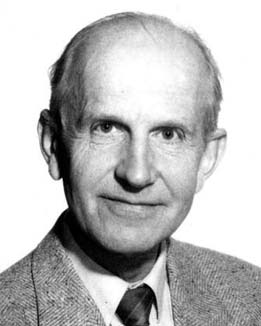


 تاريخ الرياضيات
تاريخ الرياضيات
 الرياضيات في الحضارات المختلفة
الرياضيات في الحضارات المختلفة 
 الرياضيات المتقطعة
الرياضيات المتقطعة
 الجبر
الجبر
 الهندسة
الهندسة 
 المعادلات التفاضلية و التكاملية
المعادلات التفاضلية و التكاملية 
 التحليل
التحليل
 علماء الرياضيات
علماء الرياضيات |
Read More
Date: 18-3-2018
Date: 19-3-2018
Date: 19-3-2018
|
Born: 24 January 1931 in Mjällby, Blekinge, Sweden
Died: 25 November 2012 in Lund, Sweden

Lars Hörmander's father was a teacher in the small fishing village on the south coast of Sweden where he was born. Lars attended his first school in the village, then made a daily train journey to attend a higher level school in a larger nearby town. For the next stage in his schooling he had to move to Lund where he attended the gymnasium. There he was able to devote much time to studying university level mathematics, encouraged by a teacher who had been a research student of Marcel Riesz.
In 1948 Hörmander graduated from the gymnasium and studied at the University of Lund. There he was taught by Marcel Riesz who lectured to him on classical function theory and harmonic analysis. Hörmander was awarded a master's degree in 1950 and began to undertake research supervised by Marcel Riesz. After Marcel Riesz retired in 1952 Hörmander began working on the theory of partial differential equations.
Before completing his doctorate, Hörmander spent the year 1953-54 doing military service but he was able to continue reading mathematics during this time. His doctorate was completed in 1955 and he applied for a professorship at the University of Stockholm. Before a decision was made on the professorship Hörmander left for a visit to the United States where he spent time at the universities of Chicago, Kansas and Minnesota. He also visited the Institute for Mathematical Sciences (now the Courant Institute) which was directed at that time by Courant.
Back in Sweden he took up the appointment of professor at Stockholm from the beginning of 1957 which had been offered to him while he was in the United States. He continued to spend time in the United States, particularly at Stanford University and the Institute for Advanced Study. In 1962 the International Congress was held in Stockholm and Hörmander, as well as being heavily involved in the organisation, received a Fields Medal for his work on partial differential equations.
Garding, describing Hörmander's contributions that earned him the Fields Medal, writes in [2] of early contributions by Hadamard to linear differential operators which led to the first complete results by Petrovsky. He continues:-
... in a lecture in 1945 [Petrovsky] explicitly asked for a general theory of linear differential operators including those which do not appear in the mathematical models of physics. ... In his book on distributions Laurent Schwartz ... stated a number of problems about differential operators. Since then a rather comprehensive theory has been worked out. Many people have contributed but the deepest and most significant results are due to Hörmander.
In 1963 Hörmander made an arrangement which allowed him to spend the academic teaching year in Stockholm and spring and summer at the University of Stanford in the United States. However, he writes in [4]:-
I had barely arrived at Stanford when I received an offer to come to the Institute for Advanced Study as a permanent member and professor. Although I had previously been determined not to leave Sweden, the opportunity to do research full time in a mathematically very active environment was hard to resist.
Hörmander spent from 1964 to 1968 at Princeton but felt the pressure of a full time research position so returned to Sweden to take up the chair of mathematics at the University of Lund in 1968. However he returned for frequent visits to the United States, in particular to the Institute for Advanced Study and to Stanford.
In [5] Hörmander describes the direction of his research after the award of the Fields Medal. In particular he describes how the main areas developed which are covered by his four volume text The analysis of linear partial differential operators the volumes of which appeared between 1983 and 1985. This work updates his original book Linear Partial Differential Operators (1963) which contained the results which led to his award of the Fields Medal.
Hörmander describes in [4] the later stages of his career:-
After five years devoted to writing a four volume monograph on linear partial differential operators, I spent the academic years 1984-86 as director of the Mittag-Leffler Institute in Stockholm. I had only accepted a two year appointment with leave of absence from Lund since I suspected that the many administrative duties there would not agree very well with me. The hunch was right, and since 1986 I have been in Lund where I became professor emeritus in January 1996.
Hörmander's text, An Introduction to Complex Analysis in Several Variables, has become a classic dealing with the theory of functions of several complex variables. It developed from lecture notes of a course which he gave in Stanford in 1964 and published in book form two years later. Extra material was added to later expanded editions of the work which appeared in 1973 and in 1990.
Articles:



|
|
|
|
"عادة ليلية" قد تكون المفتاح للوقاية من الخرف
|
|
|
|
|
|
|
ممتص الصدمات: طريقة عمله وأهميته وأبرز علامات تلفه
|
|
|
|
|
|
|
ضمن أسبوع الإرشاد النفسي.. جامعة العميد تُقيم أنشطةً ثقافية وتطويرية لطلبتها
|
|
|